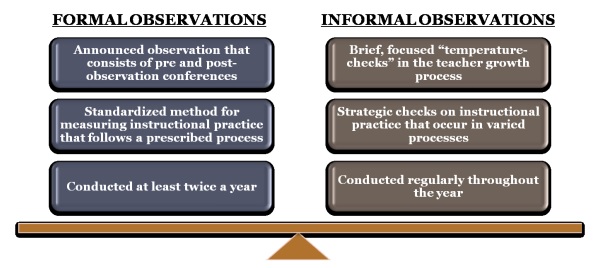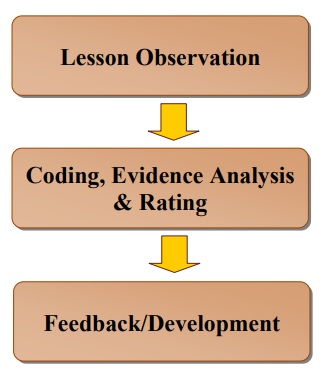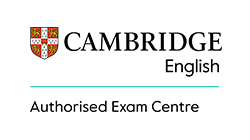Informal observations can be a valuable tool for teachers to gather information about their teaching pedagogies and progress. The goal of informal observations is to gather the information that can be used to inform instruction and improve student learning. Here are some tips for setting up effective informal observations and how to make them fruitful.
But before that let us first learn what this phrase basically means and how can you make your teachers teach better.
What Are Informal Observations?
Informal observations share a very different vision than class observations as it does not involve certifications, codes, official score sheets, etc. these type of observations are conducted by a supervisor, mentor, or coach and focuses exclusively on the teacher's behavior and what they are currently practicing in the classroom. The observation is a face-to-face session that runs for around 10-30 minutes.

The observer collects objective and specific evidence about what the educator is doing and saying in a class and how the students respond at that particular moment. The supervisor then meets the teacher and shares notes, identifies effective behavior traits, and discusses strengths. Together they plan how to make student interactions better, effective, frequent, and long. They create an action plan for future sessions and plan another time for another information observation thus continuing the teachers learning cycle.
8 Ways To Plan And Set Up Your Informal Observations

Here is a step-by-step guide on how to generate fruitful informal observations for the best results:
- Plan Your Observations
Plan ahead for when and how you will conduct your observations. Decide on the length of time for each observation, which students you will observe, and what you will look for. Make sure you have all the necessary materials and that you have planned for any potential disruptions that may occur during the observation.
- Choose The Right Setting
Consider the environment in which you will conduct your observations. Choose a time when teachers are likely to be engaged in meaningful learning activities, and select a location where you can observe without disrupting the class. It's also important to consider the seating arrangement of the classroom and how it may affect your observations.
- Be Discreet
It's important to be as unobtrusive as possible during your observations. Try to blend in with the classroom environment and avoid drawing attention to yourself. This will help you get a more accurate picture of what is happening in the classroom and how students are responding to instruction.
- Take Notes
During your observations, take detailed notes on what you observe. Record specific behaviors or skills that teachers exhibit, and note any patterns or trends that you notice. This will help you later when you analyze the data and make decisions about how to adjust your instruction.
- Analyze Your Data
After you have conducted your observations, analyze the data you have collected. Look for patterns or trends in teacher behavior or performance, and use this information to make decisions about how to adjust your instruction. It's important to be objective in your analysis and avoid making assumptions based on limited data.
- Offer Timely Feedback
Sharing your observations and data with teachers can be a valuable way to gain new insights and ideas for instruction as it acts as a catalyst for professional development. Consider sharing your data with teachers or instructional coaches, and discuss strategies for improving student learning based on your observations.
- Use Your Data To Inform Instruction
The ultimate goal of informal observations is to improve student learning. Use the data you have collected to inform your instruction and make adjustments as needed. Consider using the data to create individualized learning plans for teachers who may be struggling, or to modify your observation strategies to better meet the needs of your teachers.
- Continuously Reflect And Adjust
Informal observations should be an ongoing process that is continually refined and adjusted. Reflect on your observations and the data you have collected, and adjust your approach as needed. This will help you stay responsive to your student's needs and ensure that you and your teachers are providing the most effective instruction possible.
Make Your Teachers The Better Version Of Themselves
Teachers might not show this often but they are in continuous need of positive support that will help them learn and grow. Informal observations can be a great way to enlighten them about their strengths and weaknesses and create an action plan to make student learning better. However, if you are unsure about how to support your teachers during their crucial times, consider pursuing a Diploma in Educational Administration to gain better insights.









